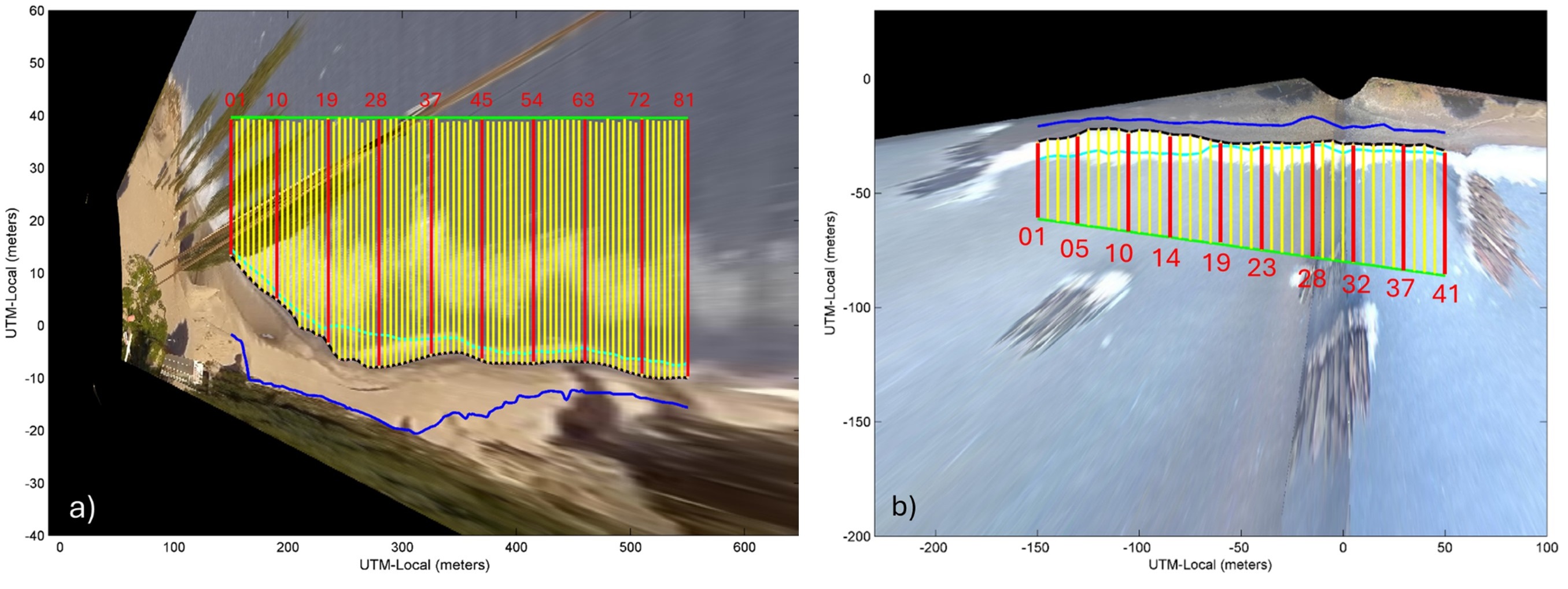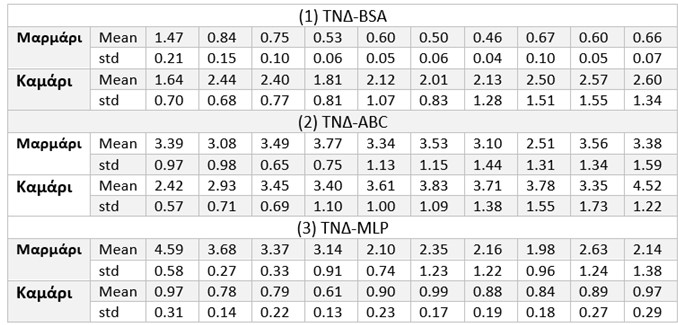The input/output dataset used by the Artificial Neural Networks (ANNs) were collated during the duration of the project. More specifically, synced timeseries of i) wind records (velocity and direction); ii) wave records (height and periods) deriving from the RBR wave loggers; and iii) shoreline and wave run-up positions recorded from the optical monitoring system, were used to “feed” and train the ANNs as an effort to project shoreline position, at specific locations for each beach.
 The capability of three ANNs in projecting shoreline position was investigated in-depth. Each of the used ANNs applied 20 “runs” for each of the 10 selected positins for each beach (200 runs in total), with different forcing conditions at each time. Mean values and standard deviations against the recorded position of the shorine are presented in the table below.
The capability of three ANNs in projecting shoreline position was investigated in-depth. Each of the used ANNs applied 20 “runs” for each of the 10 selected positins for each beach (200 runs in total), with different forcing conditions at each time. Mean values and standard deviations against the recorded position of the shorine are presented in the table below.
 Results suggest that the ANN based in a Backtracking Search Algorithm (ANN-BSA) is found to be capable in providing the best projections, compared to rest two od the investigated ANNs. It seems that this method can be used to provide accurate projections of beach morphodynamics, on the basis of few, and easy to gather, input parameters.
Results suggest that the ANN based in a Backtracking Search Algorithm (ANN-BSA) is found to be capable in providing the best projections, compared to rest two od the investigated ANNs. It seems that this method can be used to provide accurate projections of beach morphodynamics, on the basis of few, and easy to gather, input parameters.
